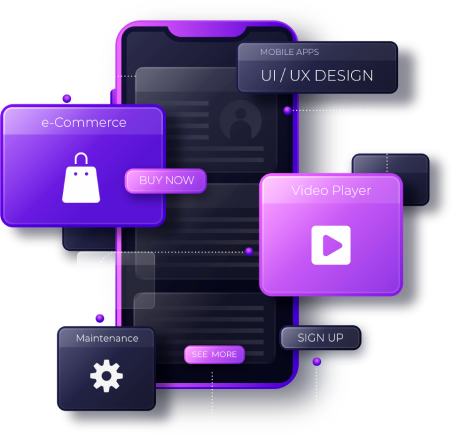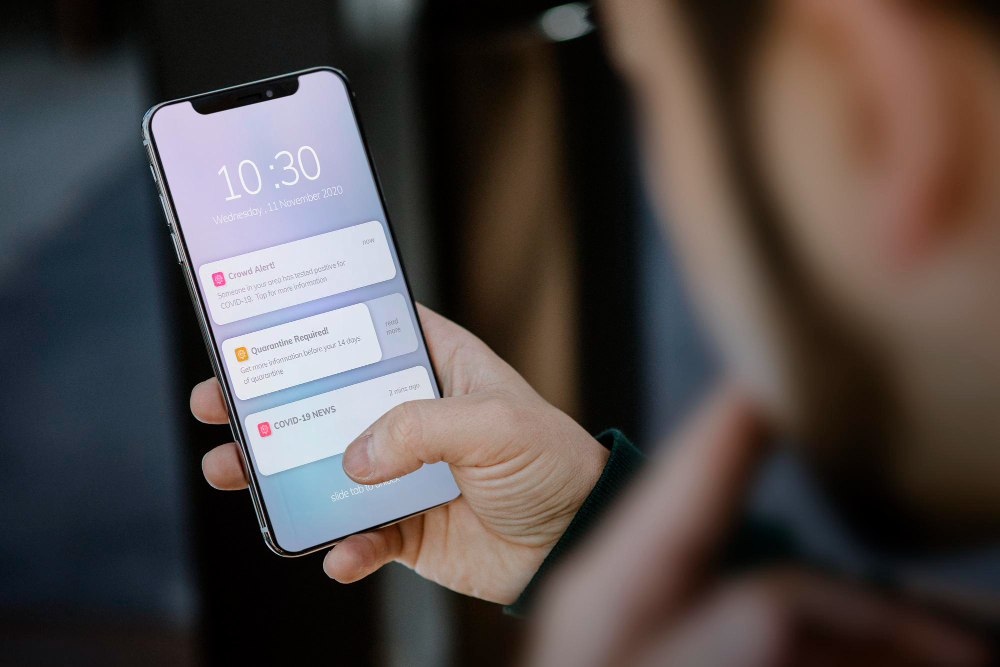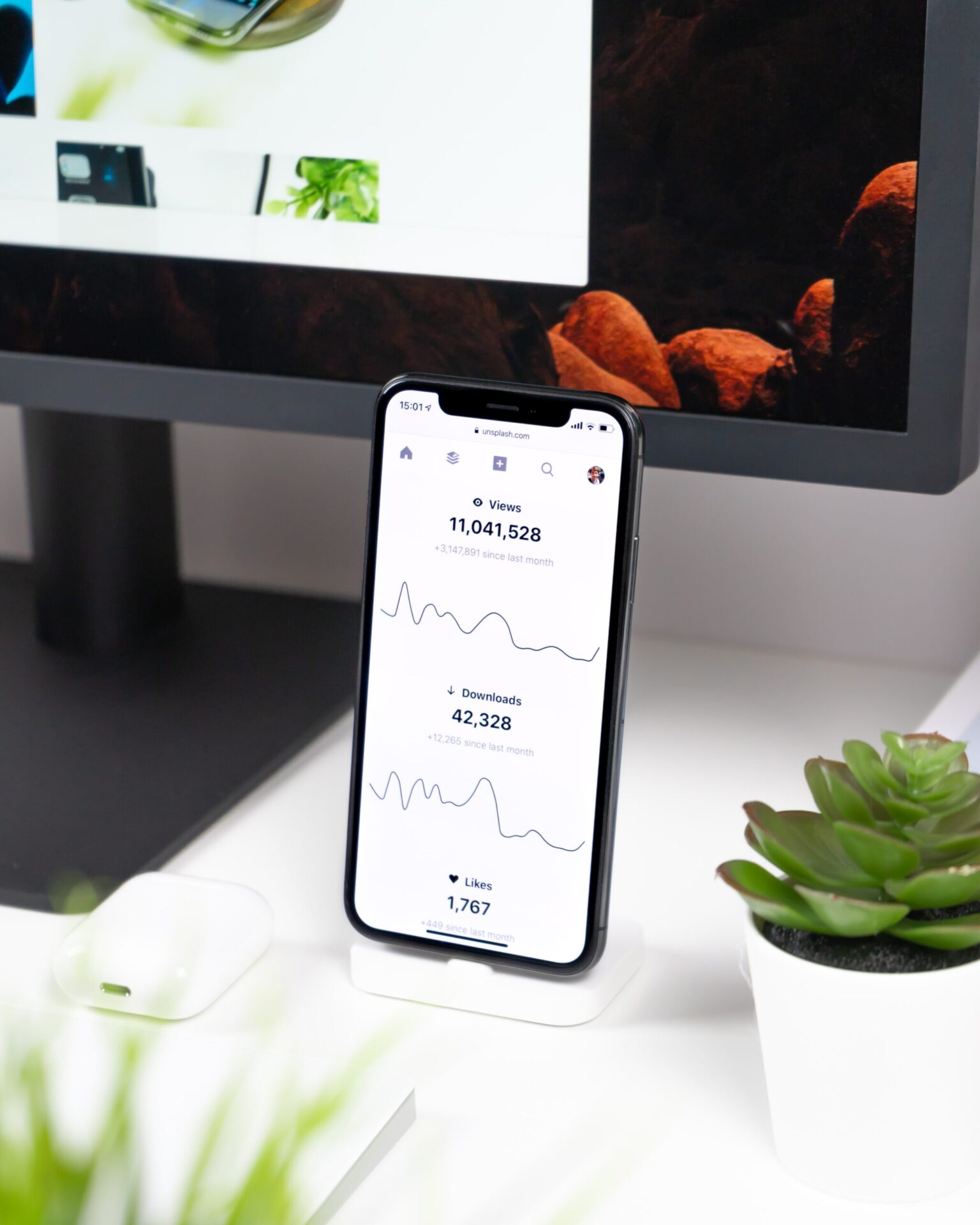Mobile app usage is growing exponentially every year Here are some statistics to put this explosive growth into perspective:
- The number of smartphone users is expected to reach 6.4 billion in 2021, representing a 5.3% increase over the previous year and a staggering 73.9% increase over 2016.
- In 2020, an estimated 218 billion apps were downloaded, and forecasts predict that number will rise to around 258 billion by the end of 2022. This is unlikely to slow down anytime soon.
- Total global mobile app revenue is expected to reach and exceed 935 billion US dollars by 2023, representing a 62% increase over 2020.
Unsurprisingly then, it has become a competitive advantage for business owners to concentrate their efforts on offering their products and services via mobile apps. As a result, many companies and organizations are capitalizing on these new trends by deploying their own apps to their customers’ mobile phones.
But deploying an app to the app store is only half the battle. The other half revolves around maximizing your app’s lifetime ROI. That’s exactly what we’re going to cover in this guide.
We’ll take a look at two aspects of mobile applications: design and implementation, and what businesses need to do in order to maximize the app’s profitability.
Maximizing Your App’s ROI through Better Design
Step 1: Have a Goal in Mind
When you’re figuring out how to develop a mobile app, you need to have a goal in mind. What will your app do and what is its USP?
As well as its grand purpose, how will the app work? Grab a notepad and sketch out rough ideas of what you want the app to look like and what functions it will serve. Will it feature ads or will it be a paid app?
Some key questions to answer in this step include:
- What purpose will this app serve?
- Why will it be popular?
- How will it make money?
- What will the app look like?

Step 2: Research
At this point in the mobile app development cycle, research is critical. Is there a genuine need for the app? Is the problem that you’ve identified one that a wide range of people has?
You might think that this question is impossible to answer but it’s not. Hop on Google Keyword Planner or Google Trends and see how hot keywords relating to your concept are.
Competitor research is another crucial aspect of this step. Is there someone out there who’s already made an app similar to the one you’re planning? There are millions of apps available and it’s likely that someone’s already tried it.
If it’s popular, what will you be doing that will make your app more popular? If it’s not popular, how will you avoid suffering the same fate? You should take a look at reviews and find out what people liked and disliked about
You should also check that your app is technically possible. If it is, will it require the latest hardware or will it run on anything?
Step 3: Wireframing
Wireframing is an important step in custom mobile app development. A wireframe is essentially a mockup of your final design. You need to create detailed mockups of what your app will look like and how it will work.
Your visual design should be nailed for the wireframe and you should also show how the screens will flow from one to another like a movie’s storyboard. To make wireframes more efficient, figure out the use cases for your app and make one wireframe for each use case.
This step helps you identify extraneous steps in the process that you can cut out and simplify. Trust us, your users will thank you later for taking more time in this step of the mobile app development process.
To help you, you can use apps like InvisionApp to stitch screens together that you can then click through. For a free walkthrough of this process, please contact us.
When wireframing, consider how each step will work. Create data diagrams and map APIs.
Step 4: Demonstrate the Proof of Concept
Now that you’ve got the app’s concept figured out, it’s time to show off your proof of concept. This step is vital: show it to family and friends, as well as coworkers and other more objective parties. Ask them for feedback and see whether they would use the app.
If they wouldn’t use the app, find out why and see if it’s something you can fix. Revise wireframes accordingly.
Step 5: Making the App
Finally, we get on to the most fun part of learning how to develop a mobile app: creating the app itself. There are a couple of routes you can go down here. If you’re confident in your abilities as a programmer, you can make it yourself or use app creation software. If you’re more of a novice, it’s best if you hire mobile developers to help you.
Whichever option you choose, you’ll need to start with the more technical aspects and set up servers and APIs. Once you’ve taken care of this, it’s time to design the visual aspects of the app. Refine your wireframes into a final look for your app (you can make minor tweaks later).
Step 6: Test Your Mobile App
Mobile app development relies on testing to iron out the problems before launch. Don’t neglect this step and rush straight into the app store or your app will not be popular.
When you’re testing your app, you want to try to break it in interesting ways. There will be bugs lurking and it’s your job to find them. Test it again and again and again, refining your app as you go along.
Once you’ve got it to a standard you’re satisfied with, release it to beta testers. As these testers find bugs fix them. You’re inching closer and closer to launch now.
It’s best if you get friends and/or stakeholders to help you beta test. We’d also recommend using tools like TestFlight to make testing easier.

Step 7: Release Your App Into the Wilds of the App Store
Now that you’ve made your tweaks and tested every aspect of your app, it’s time to launch it. Once you’ve released it, it’s time to market your app and grow its popularity.
Apple and Android have different rules regarding marketing, so you’ll need to be mindful of their specific rules. Congratulations! You’ve just released an app into the marketplace and with luck, it’ll be a success.
Maximizing Your App’s ROI Through Better Implementation
Use the App to Increase Brand Awareness
Usage times for apps have increased dramatically, giving businesses a personal platform that they can leverage to reach new customers and deepen relationships with existing customers.
Branding through apps will help businesses in maximizing their impact on users. One of the first steps to do this is to effectively use branding elements such as logos, color palettes, font styles, and so on.
Companies can also collect a metric ton of data from their mobile apps to better understand their target audience (their needs, preferences, and pain points) and develop more effective marketing strategies.
Providing discounts and special offers can also be a great way to boost customer consumption. Statistically, rewarded customers are more likely to purchase more and to recommend the company to their friends.
Such a strategy is easy to implement by using push notifications or in-app messages. Loyalty rewards also help in establishing a strong connection, converting users into loyal customers.
Fender, an American guitar manufacturer, is one example of a company that used mobile apps to promote brand loyalty and positioning.
The company released Tuner, a free tuning app for guitars, electric basses, and ukuleles. By offering a free service within a branded app, the company managed to:
- Boost customer appreciation
- Raise their overall interest
- Significantly increase their revenue
Your Mobile App Can Be a Powerful Marketing Channel
One of the most beneficial aspects of a flourishing business is an ongoing marketing strategy. It maintains long-term relationships with an audience and conveniently provides them with products and services.
And a good marketing strategy is based on analyzing customer behavior. A mobile app can give companies insight into:
- Shopping behaviors of target audiences
- Engagement levels
- Locations
- Browsing habits
- Mobile usage per amount and hours
All of these elements are valuable insights that help companies improve the quality of their products and services. Delivering valuable content to the users more effectively than other channels is another aspect of marketing that can be facilitated by apps.
Push notifications, for example, can boost user engagement by up to 88 percent and retention rates by 3 to 10 times. Push notifications enable businesses to:
- Promote their products and services
- Direct users to social media channels
- Restore abandoned shopping carts
Starbucks is an example of a company that invested heavily in its mobile app and saw impressive results.
In 2015, the company’s mobile app accounted for 21% of all transactions in the United States, making it one of Starbucks’ core business strategies.
The success was achieved by designing their app as a sort of loyalty card that rewards customers with free drinks and other deals through the built-in QR-code scanner.

Use Your App As a Point of Sale
Consumer spending on mobile apps surpassed $65 billion in the first half of 2021, representing a 24% increase over the previous year. Companies can profit from this trend and the massive shift to online shopping by selling their products and services via mobile devices.
You may feel compelled, like many businesses, to set up shop on third-party marketplaces or E-commerce platforms. And while this approach has its advantages, it severely limits your revenue potential.
Some of the cons of using such platforms are:
- Identity. Platforms such as Shopify and Woocommerce offer limited branding options for their users.
- Costs. Third-party services typically charge commissions on sales and shipping costs. Other fees may apply for plugins, listings, and participation in ads and promotions.
- Durability. If you use one of these third-party e-commerce websites, you risk losing your business if the service in question shuts down.
Setting up your store on a branded app is a much better alternative. It will allow your company to evolve its marketing, sales, and branding strategies as you see fit, without the constraints of third-party platforms.
Setting up your store on a branded app is a much better alternative. It will allow your company to evolve its marketing, sales, and branding strategies as you see fit, without the constraints of third-party platforms.
Additionally, running a successful business entails scalability. A branded app will give your company plenty of room to:
- Grow by adding more products and services as they see fit
- Offering direct and instant in-app customer service and communication
- Reach a larger audience based on the collected data
- Build and improve long-term customer relationships
Domino’s Pizza is an example of a company that uses mobile apps to maximize their Return on Investment (ROI). The company has an effective app for ordering food. It includes a pizza tracker for users to monitor the progress of their order from preparation to delivery. Customers can also order custom takeout meals and pay using the app. In fact, mobile devices account for more than 25% of its orders.
Because mobile devices now power the majority of online traffic, businesses that want to increase their profit and expand their reachability should consider going mobile.
Every single aspect of a business would benefit from a branded mobile app, from increasing brand awareness to gaining invaluable insights.
If you would like to get your project going, don’t hesitate to contact us.

Let’s build tomorrow,
together.
14 years in business and 330+ customers say we do it right

